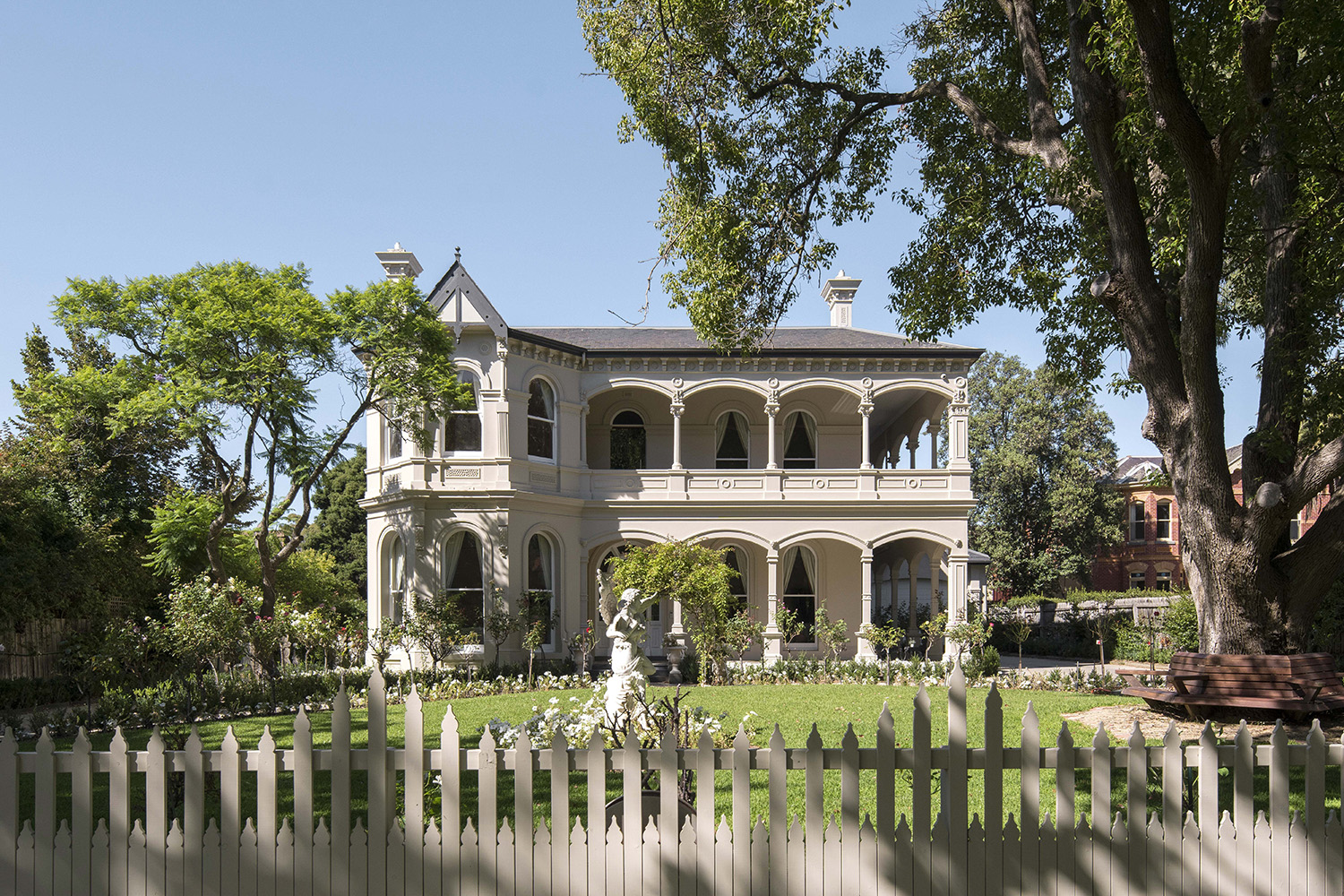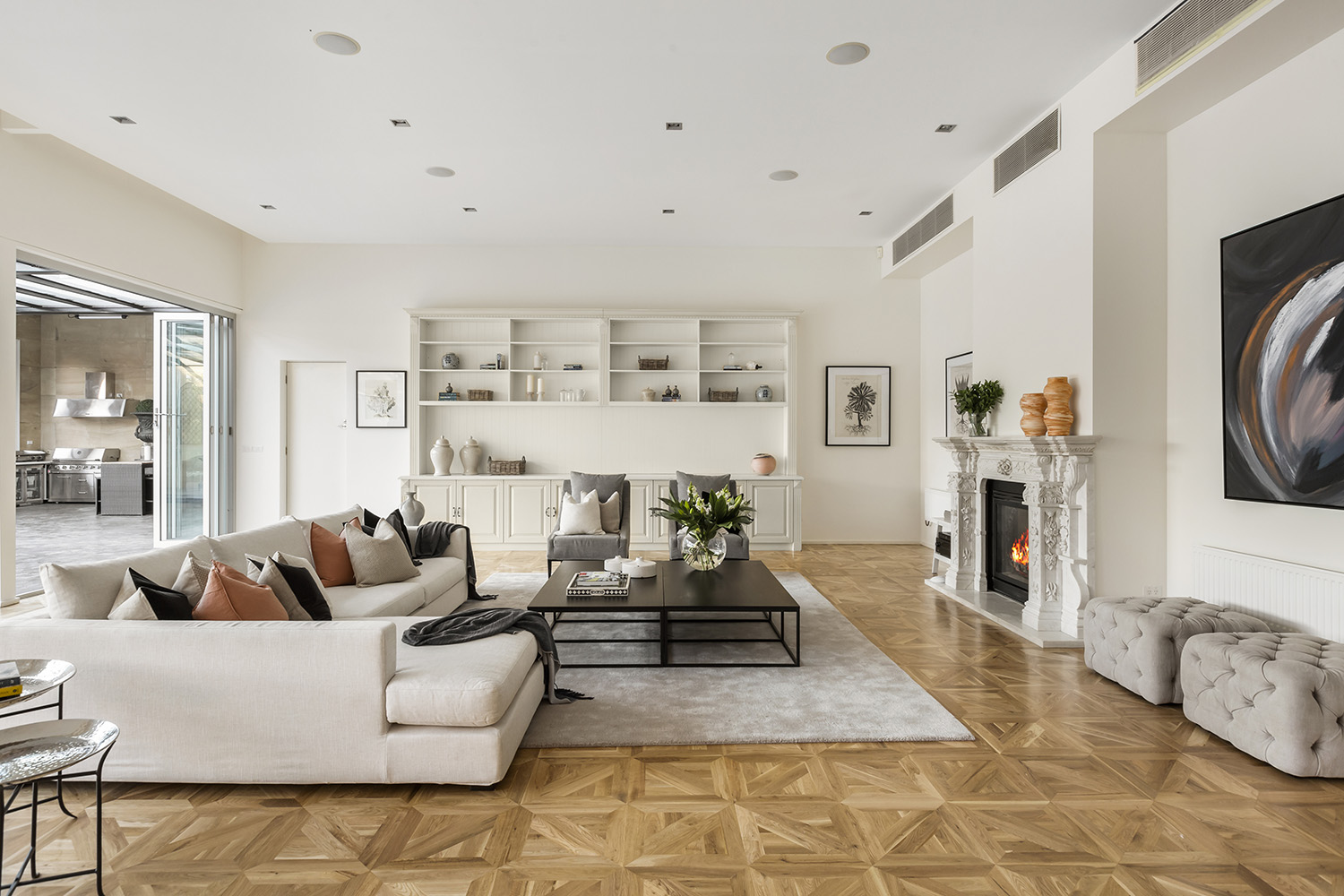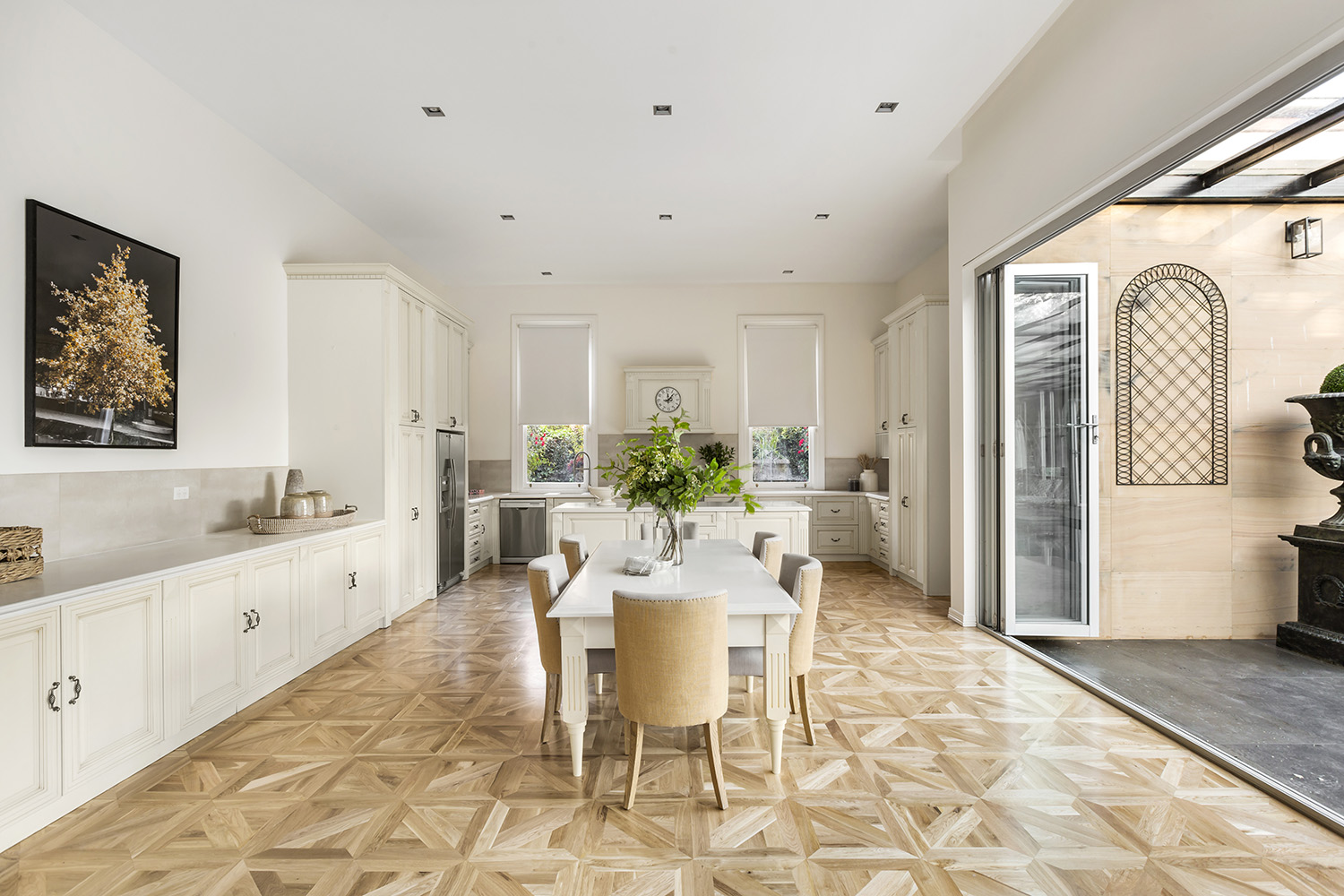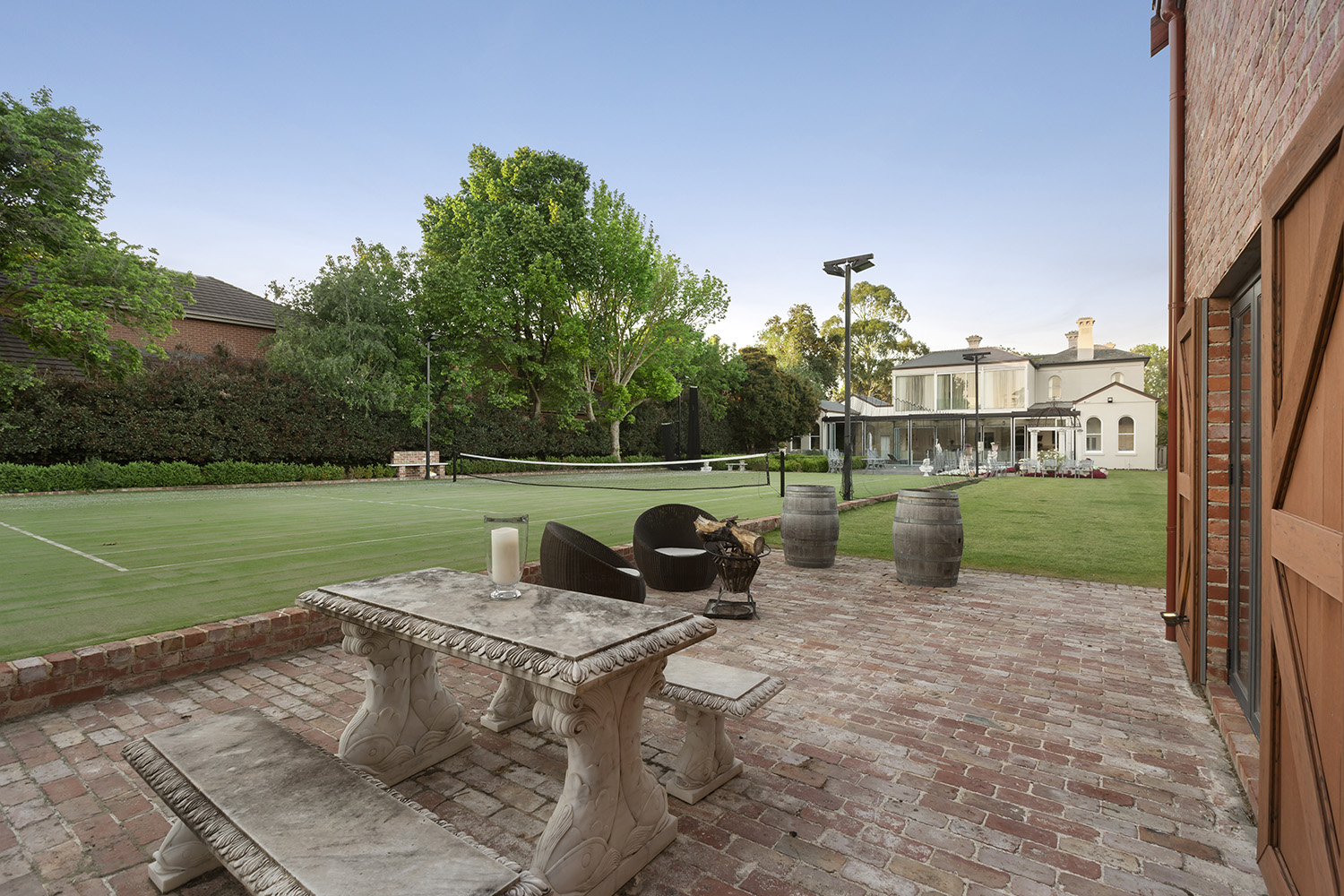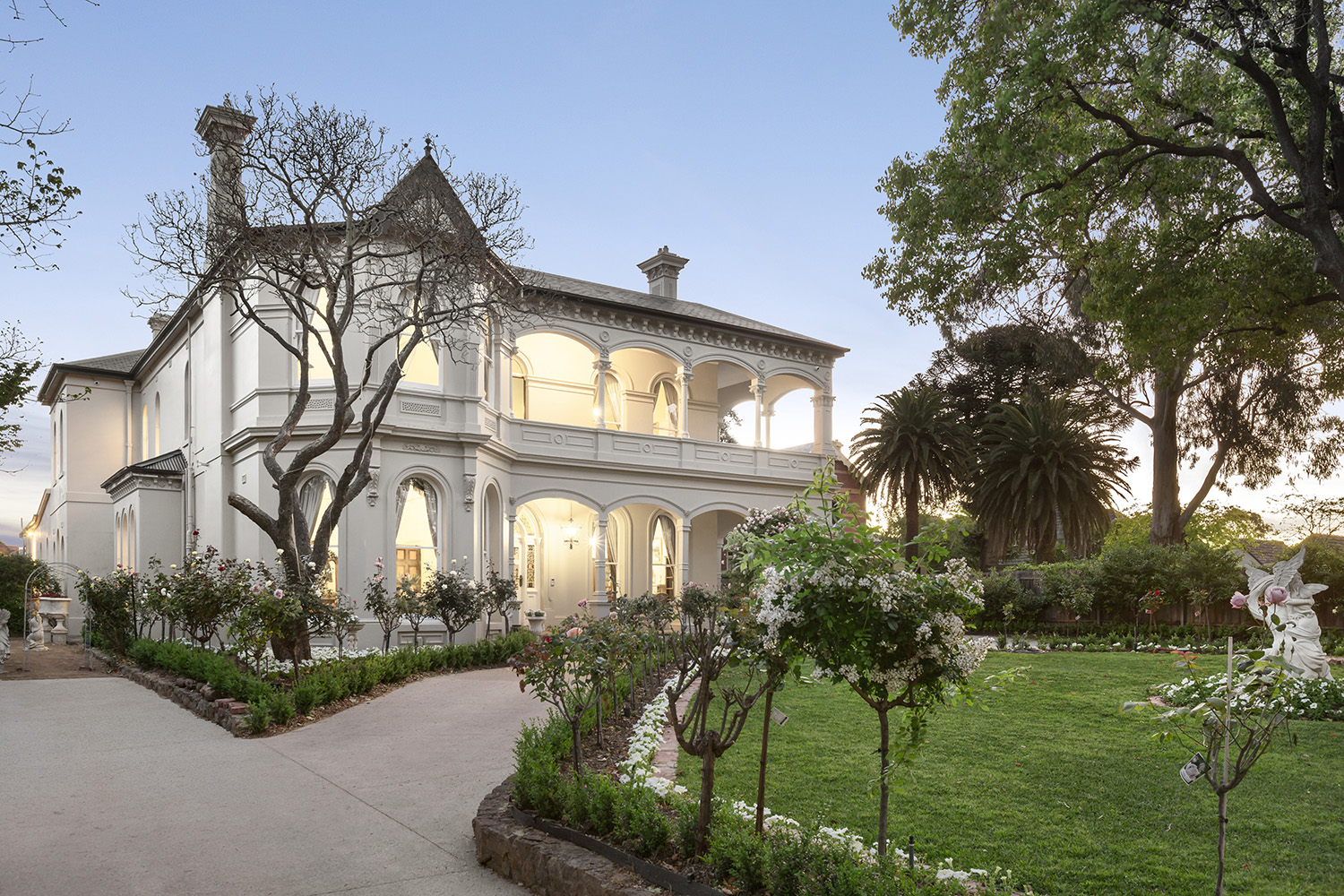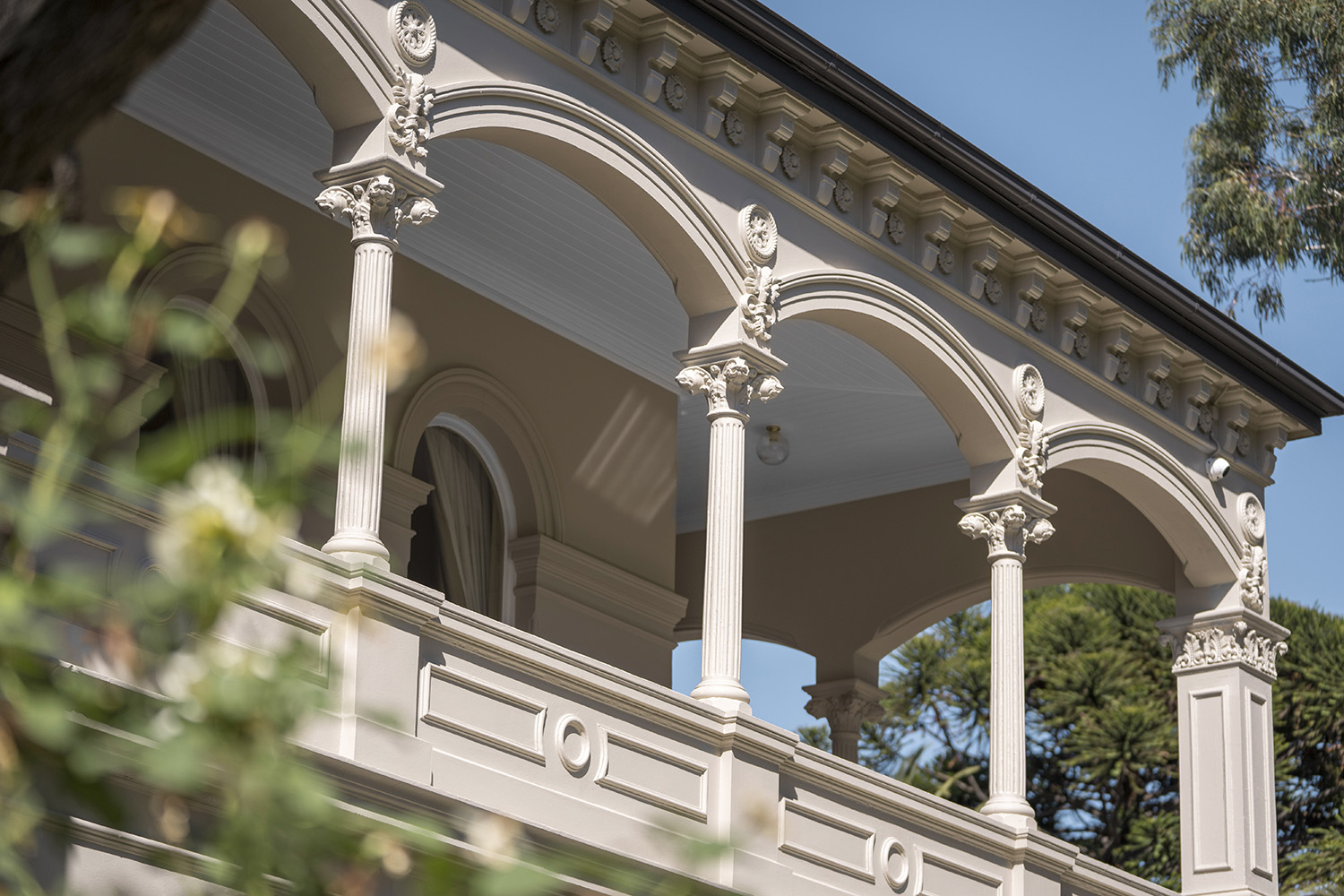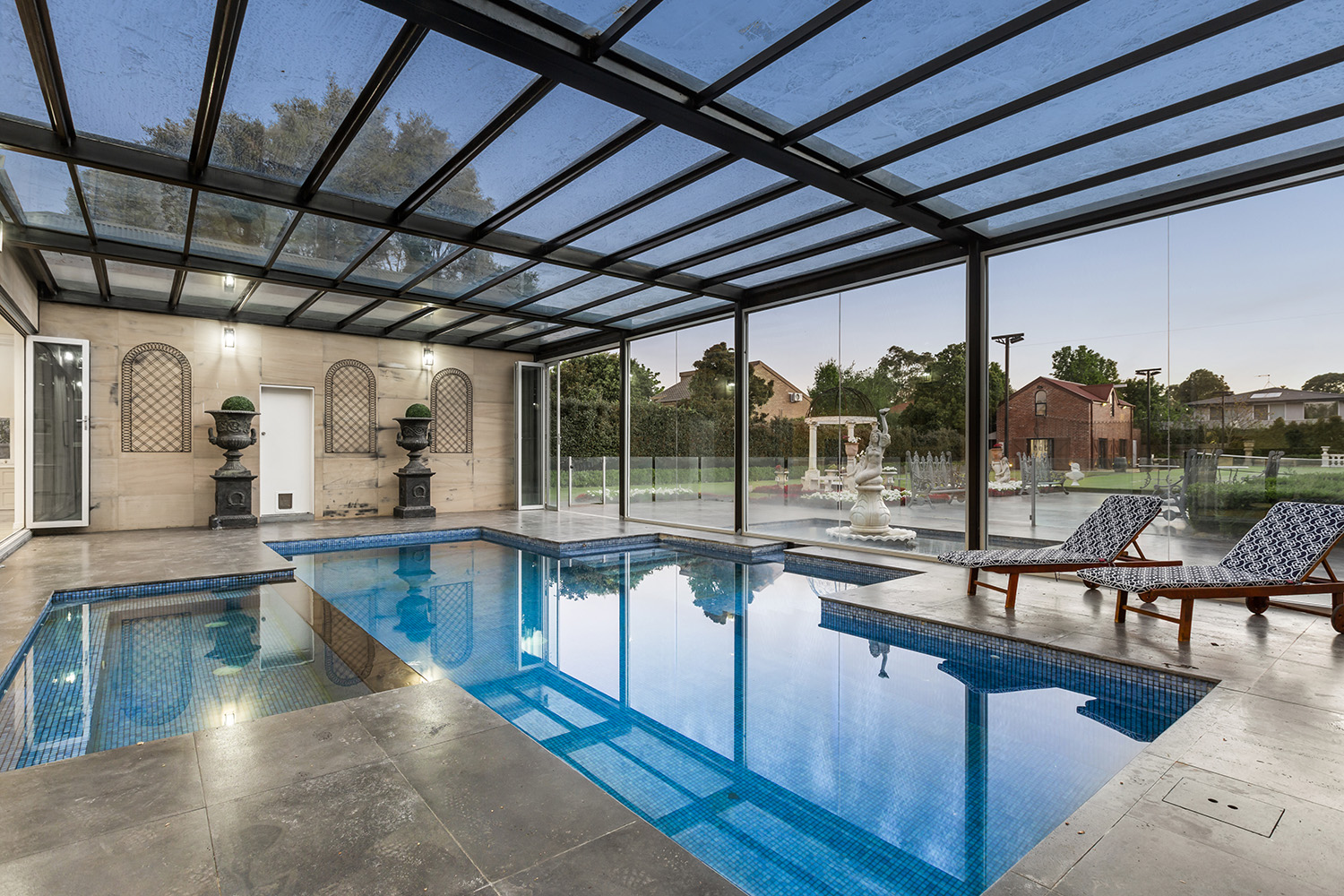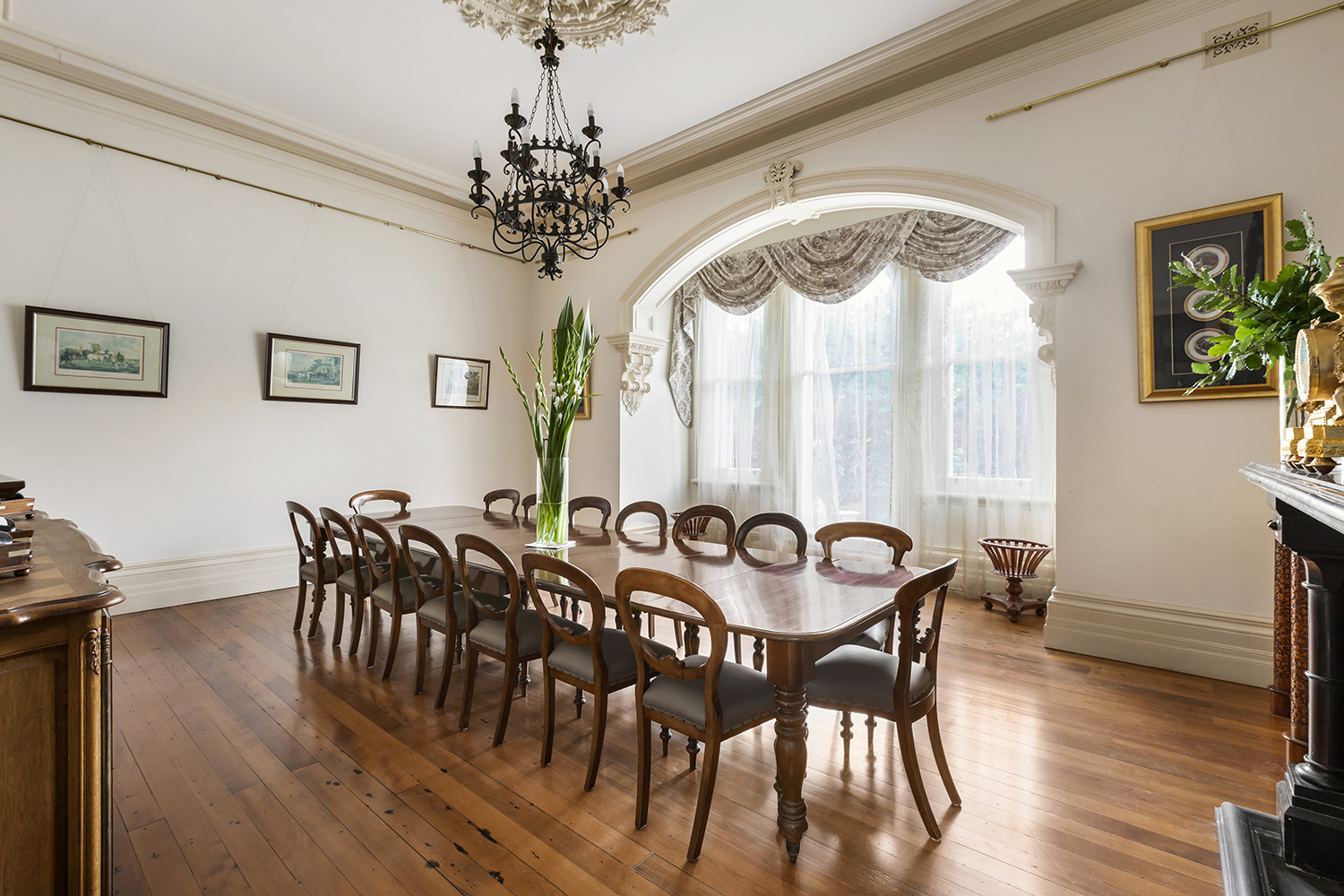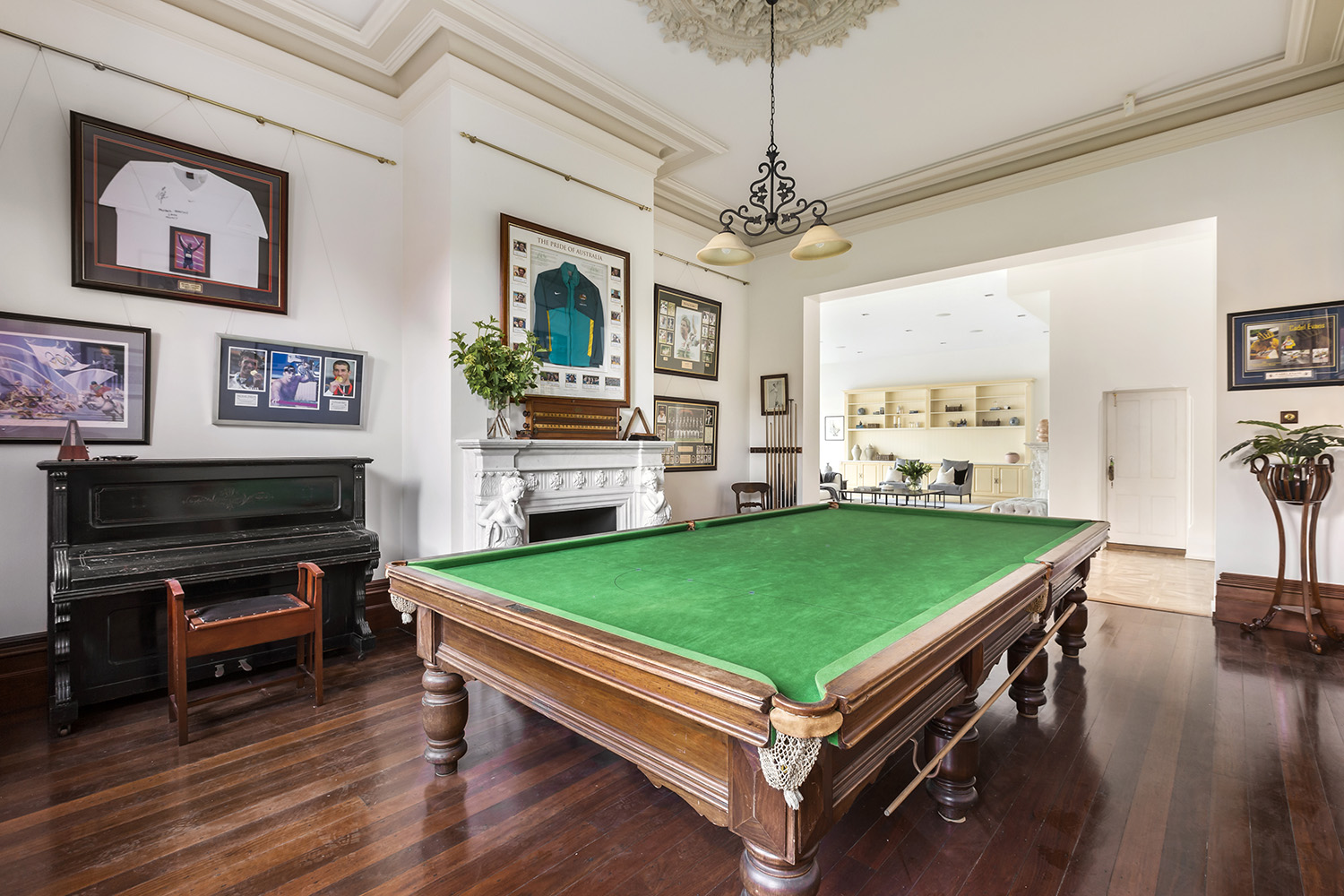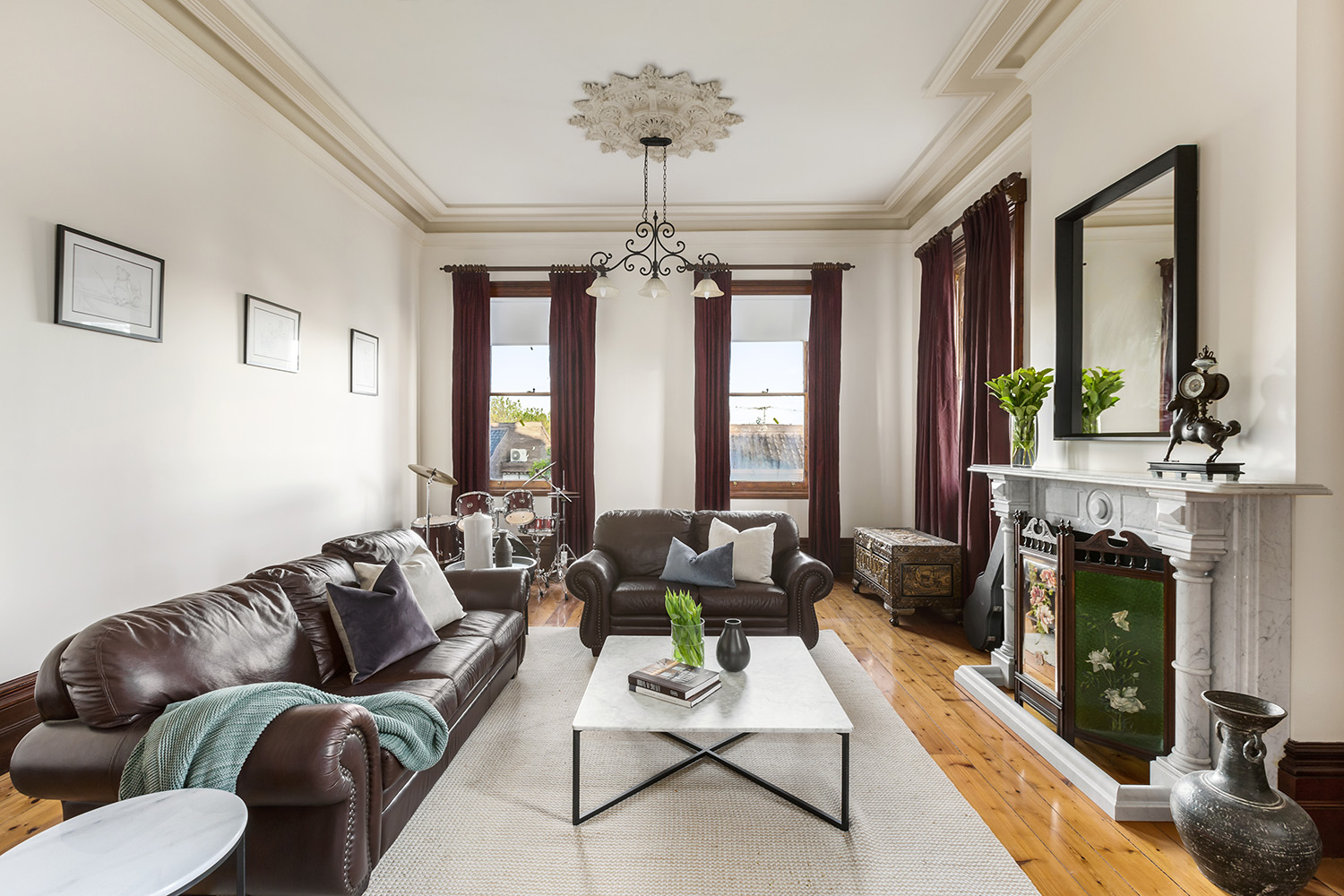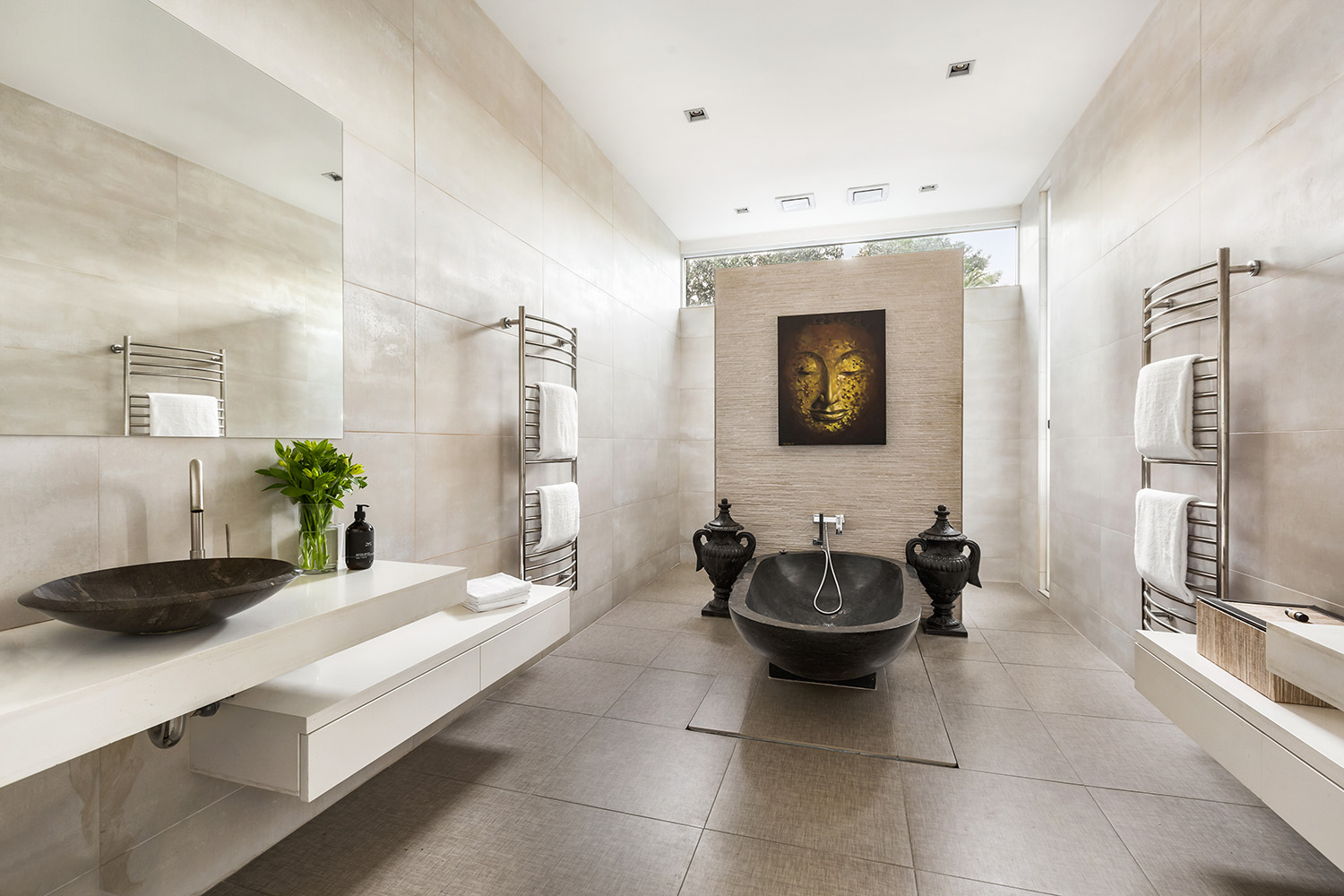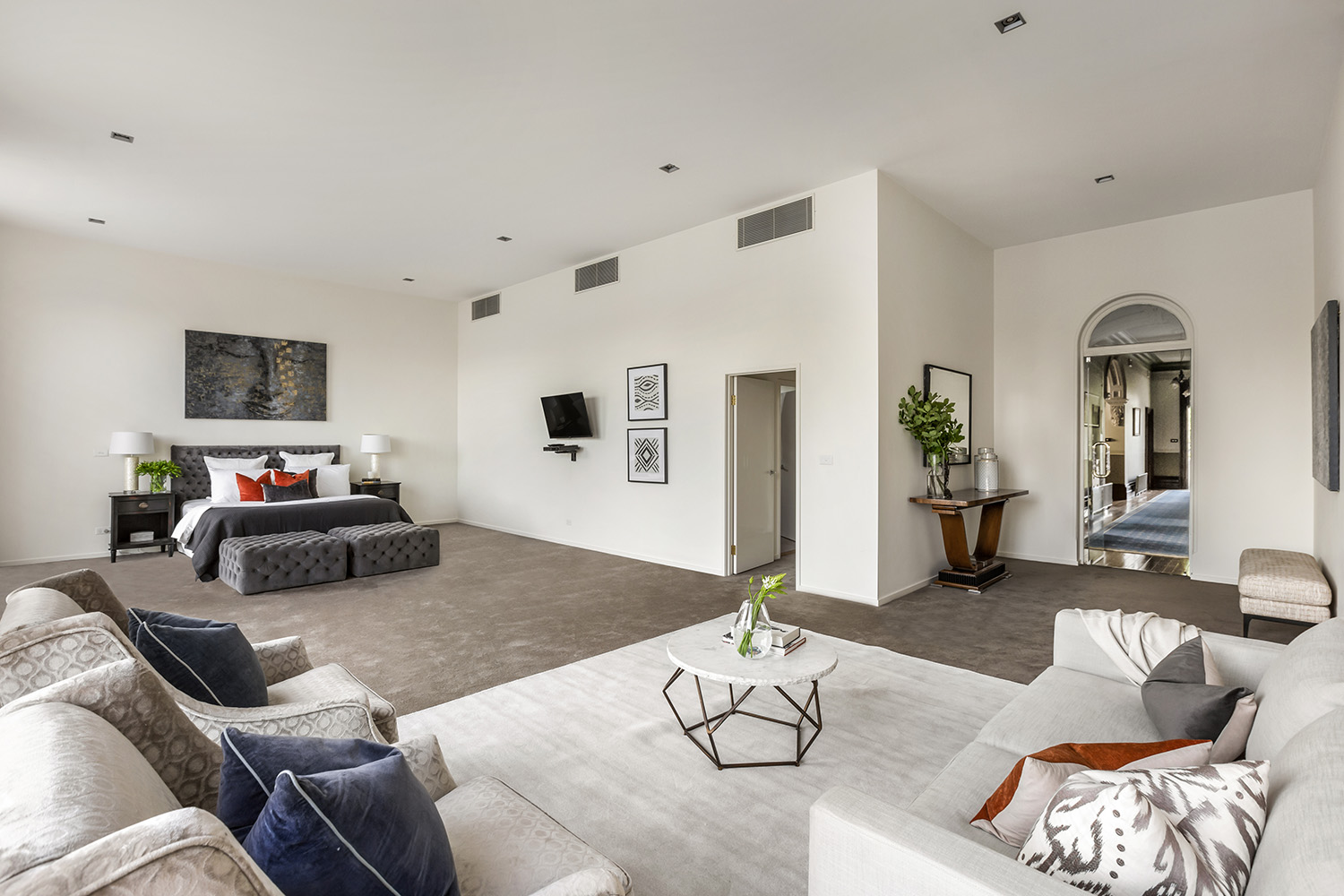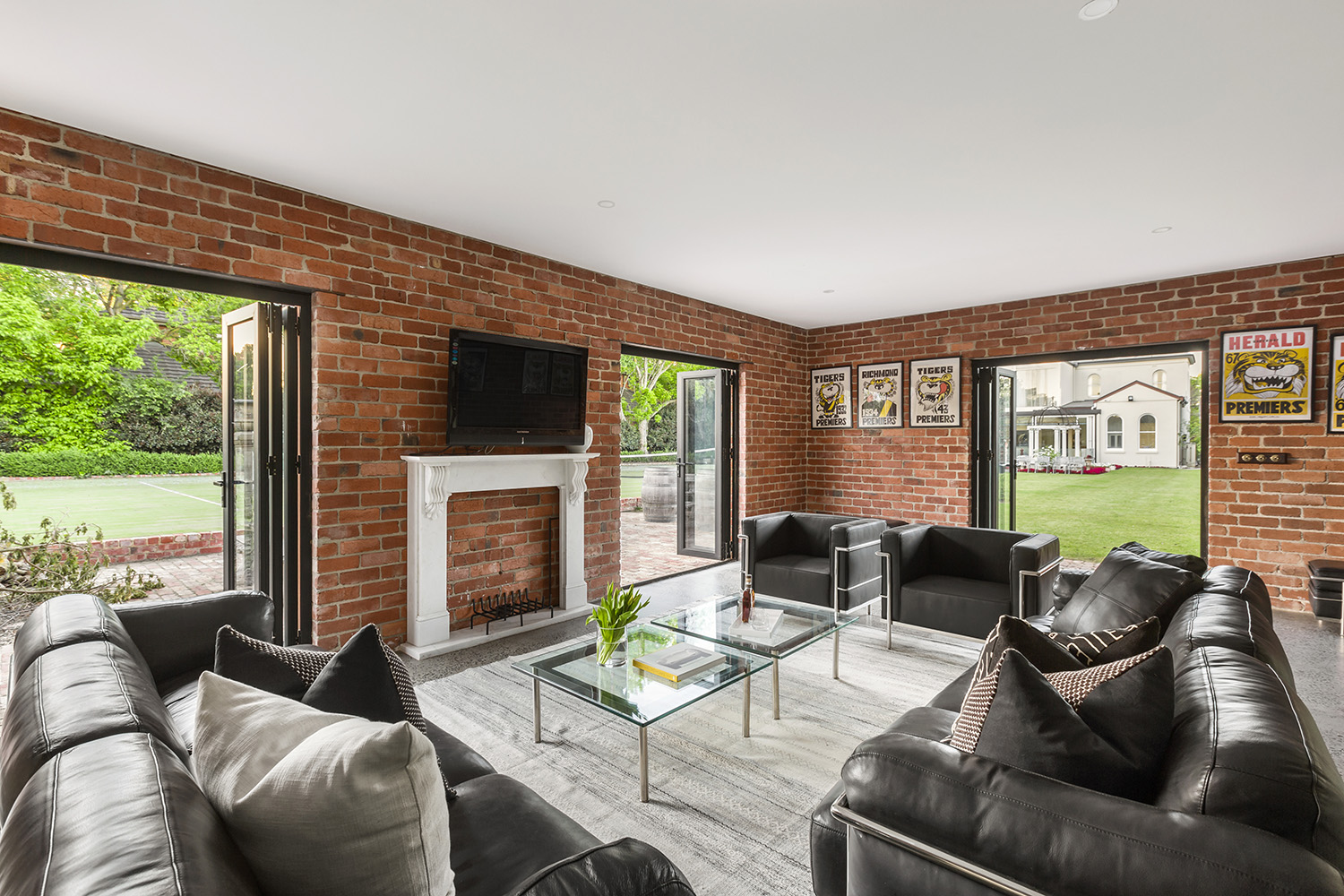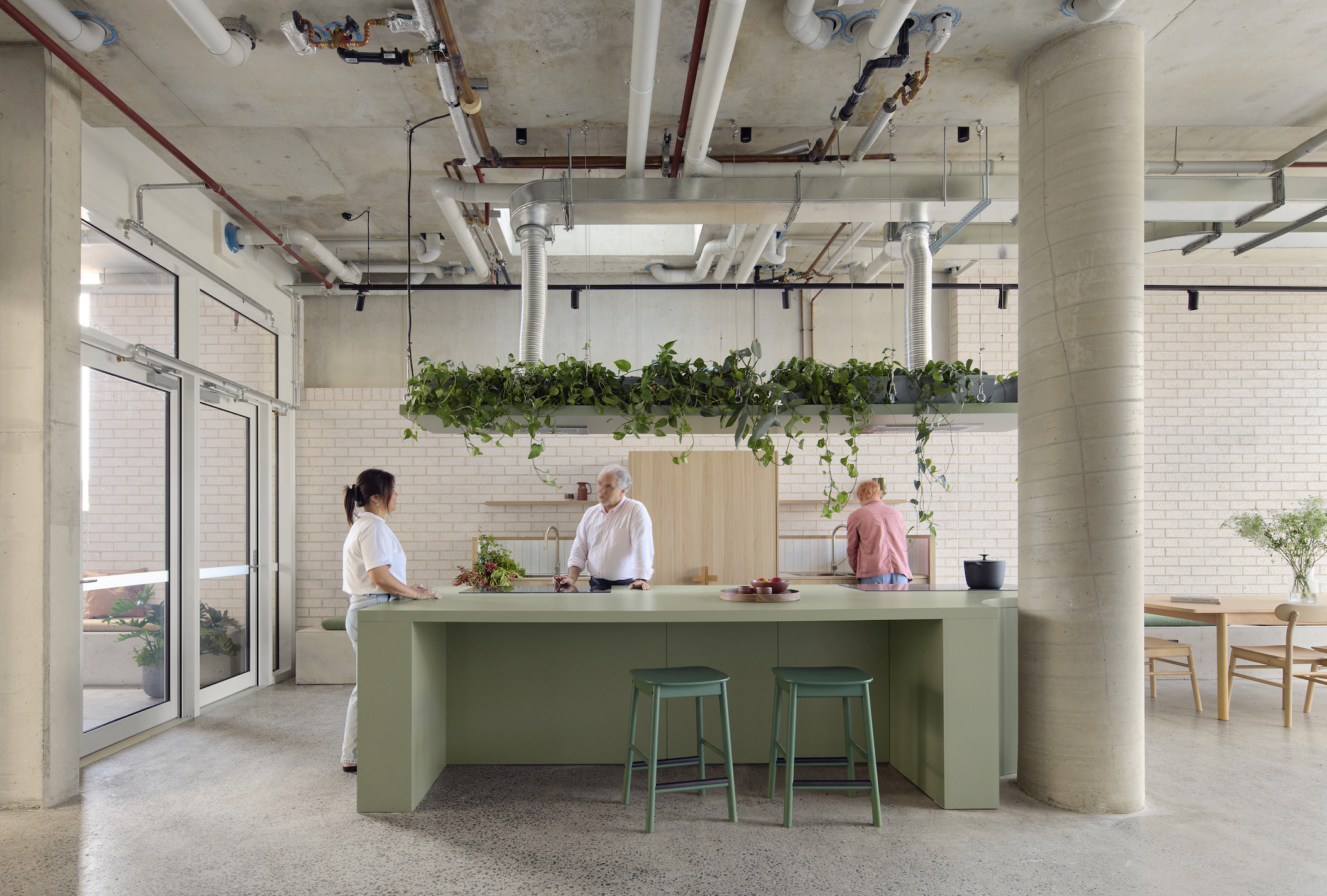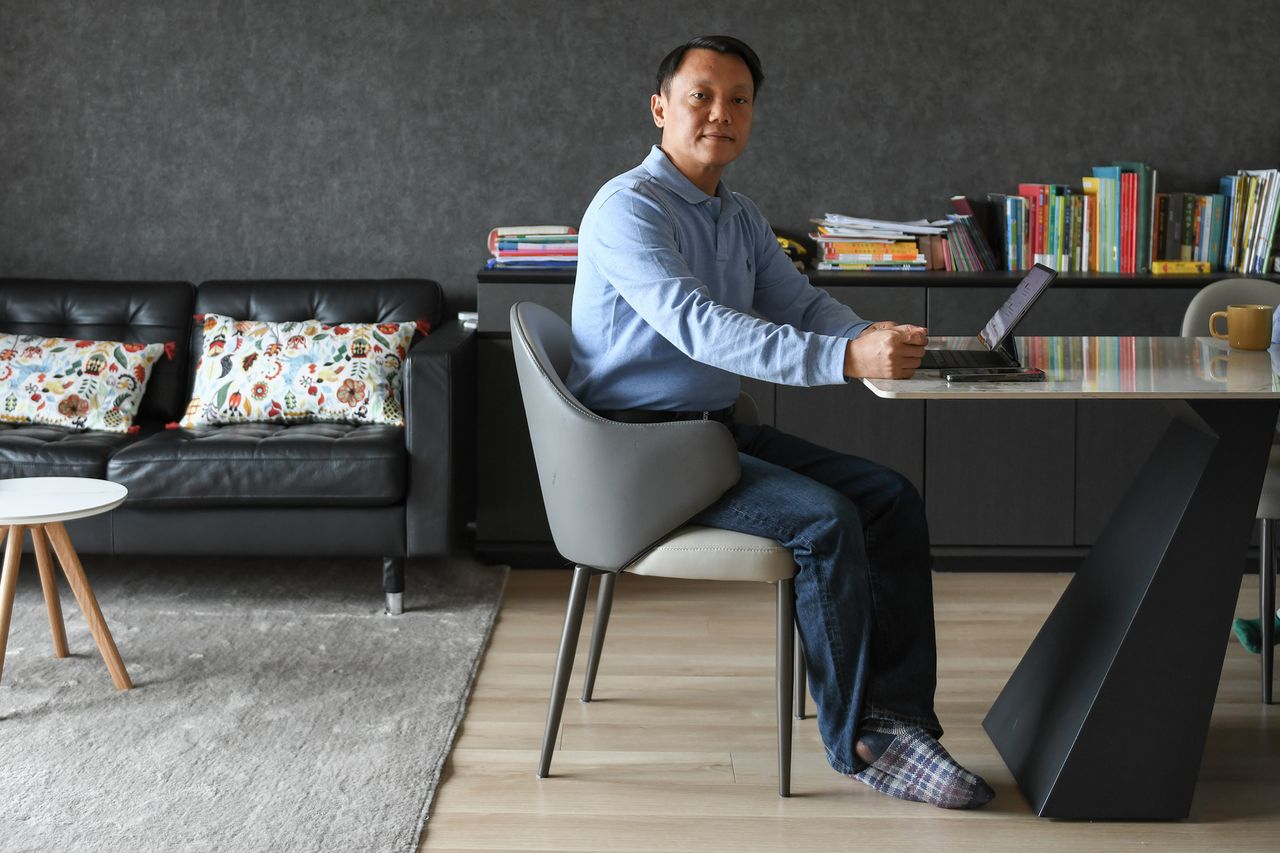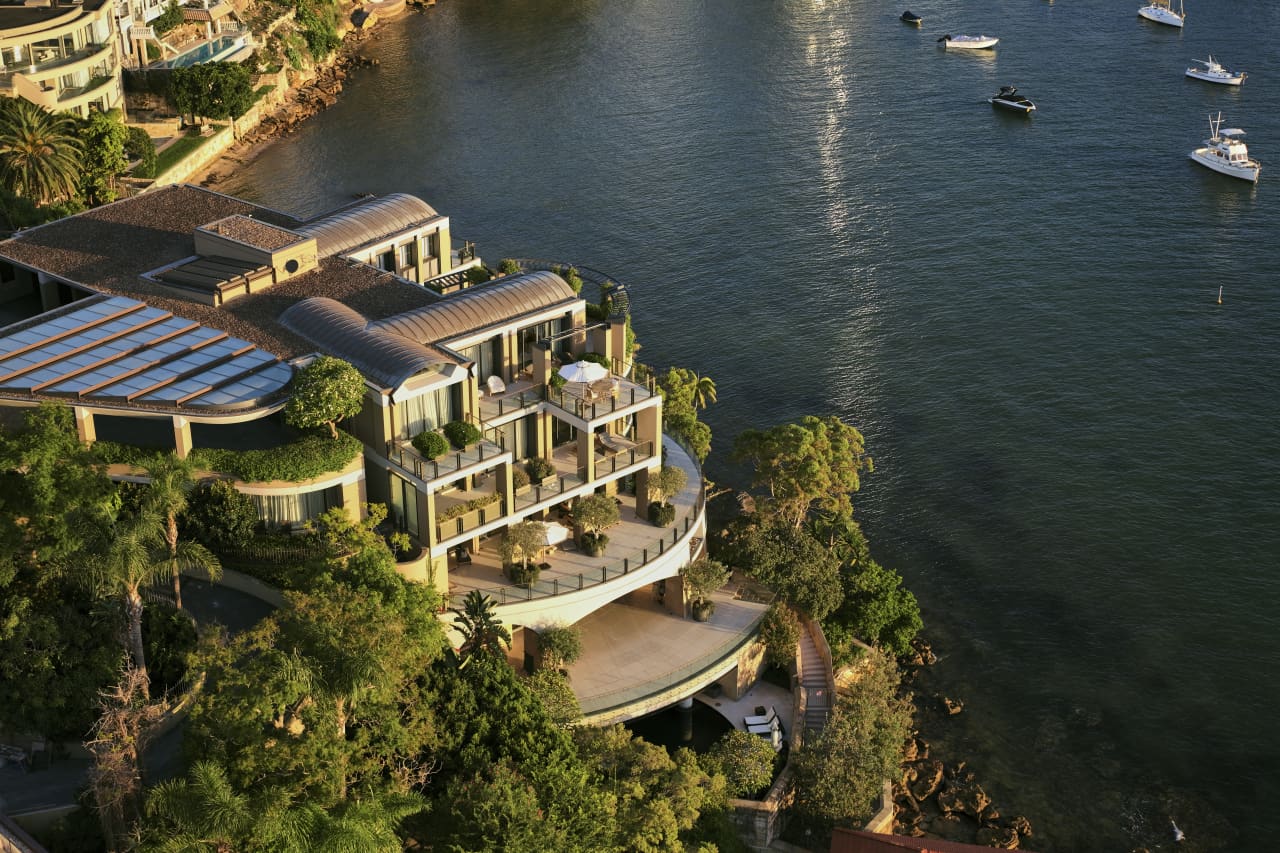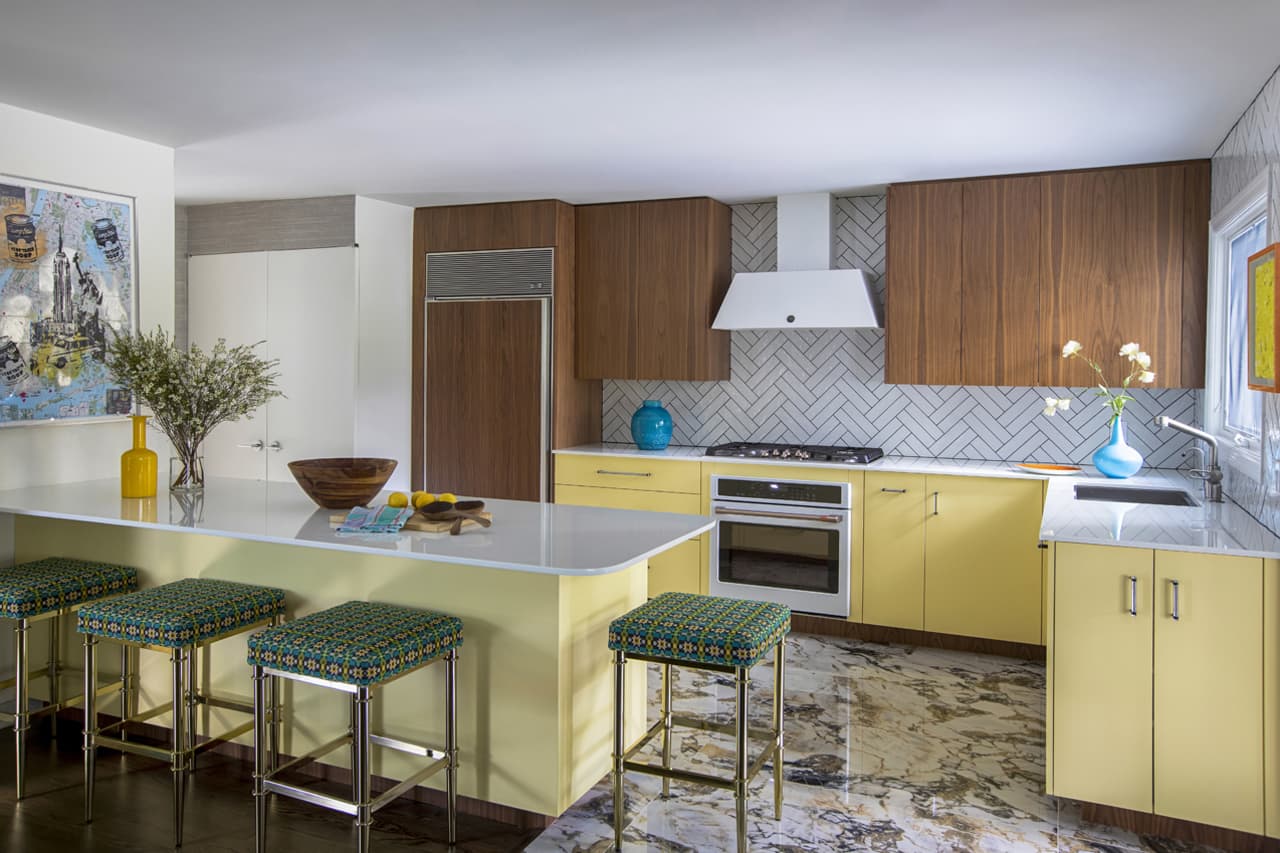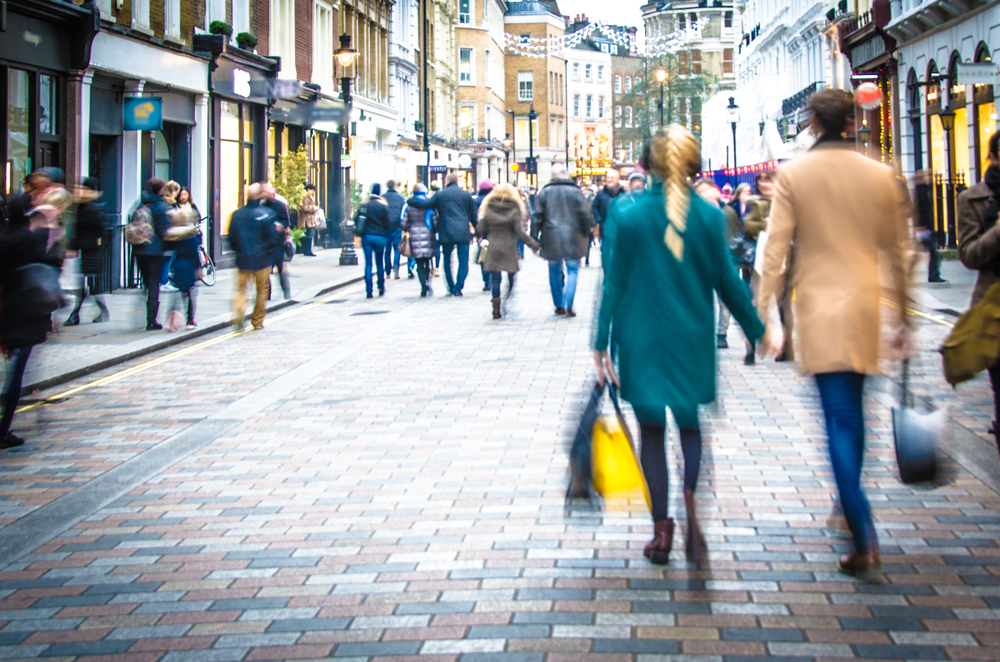Inside Kew’s Grand “Prague House”
The expansive pile is one of the finest Victorian-style homes in Melbourne.
The landmark Victorian slate-roofed residence, “Prague House”, formally known as “Dunboe” is arguably one of the finest period mansions in Kew, Melbourne.
Set back from Sackville Street, the circa 1880s-built home of 6-bedrooms, 6-bathrooms and 4-car parking is set on approximately 3400sqm of lush gardens with beautiful mature trees that speak to an era of gracious living undertaken on a grand scale.
Today, Prague House offers a heady combination of Victorian elegance — through the restoration of character features such as the original staircase, arches and mantles — and modern amenities for entertaining and living.
Inside, the home’s generous proportions are complemented by 4.5-metre ceilings and exquisite period attributes including ornate external rendering, stained glass windows and ceilings ornately decorated cornices, arches and columns.
Downstairs the entrance hall features a tessellated tile that leads to a large study, formal sitting room and dining room with an arched bay window and Black Belgian mantle alongside a billiards room. The home sees 12 (yes, 12) marble mantels, with eight of them in original condition.
Central to the home’s function is the expansive contemporary family domain boasting herringbone parquetry floors and incorporating a kitchen equipped with stone benchtops, an island bench and prestige Smeg appliances plus a butler’s pantry.
Upstairs features the flexibility of five bedrooms including a sumptuous main with walk-in-robes, and a glorious ensuite with a floor-to-ceiling glass wall overlooking the rear gardens as well as a retreat or playroom and a family bathroom.
The covered pool helps the home’s entertaining space transition from indoors to outdoors and accompanies the alfresco entertaining area that is completed by a barbeque kitchen that overlooks the night-lit tennis court.
Also found on the grounds are large lawn areas, retreats and rebuilt Victorian stables uses as a pavilion, outdoor entertainment area or possible self-contained guest accommodation or home office.
The listing is with Marshall White’s Marcus Chiminello (+61 411 411 271) with a price guide of $16.5m – $17.5m; marshallwhite.com.au
This stylish family home combines a classic palette and finishes with a flexible floorplan
Just 55 minutes from Sydney, make this your creative getaway located in the majestic Hawkesbury region.
Savvy high net worth players from Australia and Asia are getting on board as the residential landscape shifts
Build-to-rent (BTR) residential property has emerged as one of the key sectors of interest among institutional and private high-net-worth investors across the Asia-Pacific region, according to a new report from CBRE. In a survey of 500 investors, BTR recorded the strongest uptick in interest, particularly among investors targeting value-added strategies to achieve double-digit returns.
CBRE said the residential investment sector is set to attract more capital this year, with investors in Japan, Australia and mainland China the primary markets of focus for BTR development. BTR is different from regular apartment developments because the developer or investor–owner retains the entire building for long-term rental income. Knight Frank forecasts that by 2030, about 55,000 dedicated BTR apartments will have been completed in Australia.
Knight Frank says BTR is a proven model in overseas markets and Australia is now following suit.
“Investors are gravitating toward the residential sector because of the perception that it offers the ability to adjust rental income streams more quickly than other sectors in response to high inflation,” Knight Frank explained in a BTR report published in September 2023.
The report shows Melbourne has the most BTR apartments under construction, followed by Sydney. Most of them are one and two-bedroom apartments. The BTR sector is also growing in Canberra and Perth where land costs less and apartment rental yields are among the highest in the country at 5.1 percent and 6.1 percent, respectively, according to the latest CoreLogic data.
In BTR developments, there is typically a strong lifestyle emphasis to encourage renters to stay as long as possible. Developments often have proactive maintenance programs, concierges, add-on cleaning services for tenants, and amenities such as a gym, pool, yoga room, cinema, communal working spaces and outdoor barbecue and dining areas.
Some blocks allow tenants to switch apartments as their space needs change, many are pet-friendly and some even run social events for residents. However, such amenities and services can result in BTR properties being expensive to rent. Some developers and investors have been given subsidies to reserve a portion of BTR apartments as ‘affordable homes’ for local essential services workers.
Ray White chief economist Nerida Conisbee says Australian BTR is a long way behind the United States, where five percent of the country’s rental supply is owned by large companies. She says BTR is Australia’s “best bet” to raise rental supply amid today’s chronic shortage that has seen vacancy rates drop below 1% nationwide and rents skyrocket 40% over the past four years.
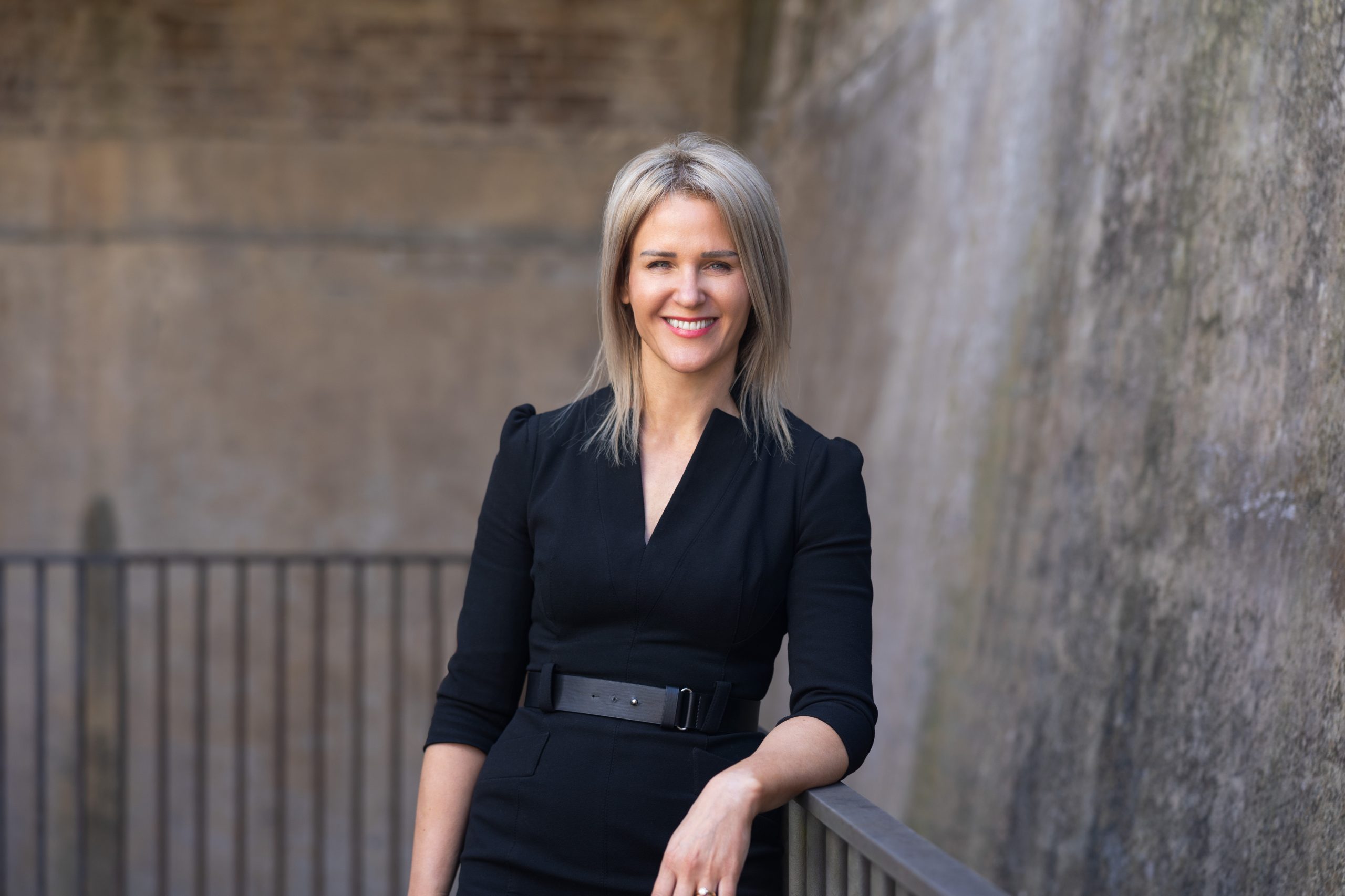
Ms Conisbee says 84 percent of Australian rental homes are owned by private landlords, typically mum and dad investors, and nine percent are owned by governments. “With Australia currently in the midst of a rental crisis, the question of who provides rental properties needs to be considered,” Ms Conisbee said. “We have relied heavily on private landlords for almost all our rental properties but we may not be able to so readily in the future.” She points out that large companies can access and manage debt more easily than private landlords when interest rates are high.
The CBRE report shows that Asia-Pacific investors are also interested in other types of residential properties. These include student accommodation, particularly in high migration markets like Australia, and retirement communities in markets with ageing populations, such as Japan and Korea. Most Asia Pacific investors said they intended to increase or keep their real estate allocations the same this year, with more than 50 percent of Australian respondents intending to invest more.
Just 55 minutes from Sydney, make this your creative getaway located in the majestic Hawkesbury region.
Consumers are going to gravitate toward applications powered by the buzzy new technology, analyst Michael Wolf predicts









